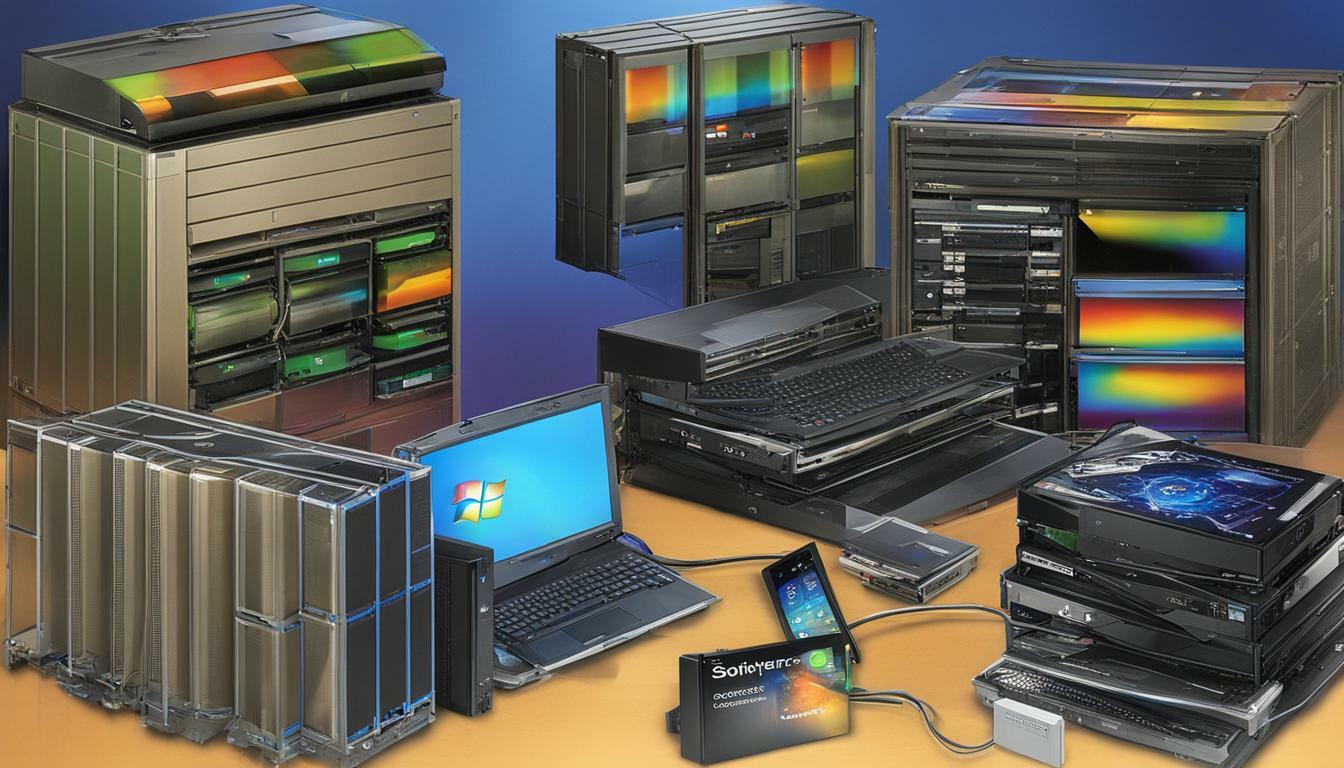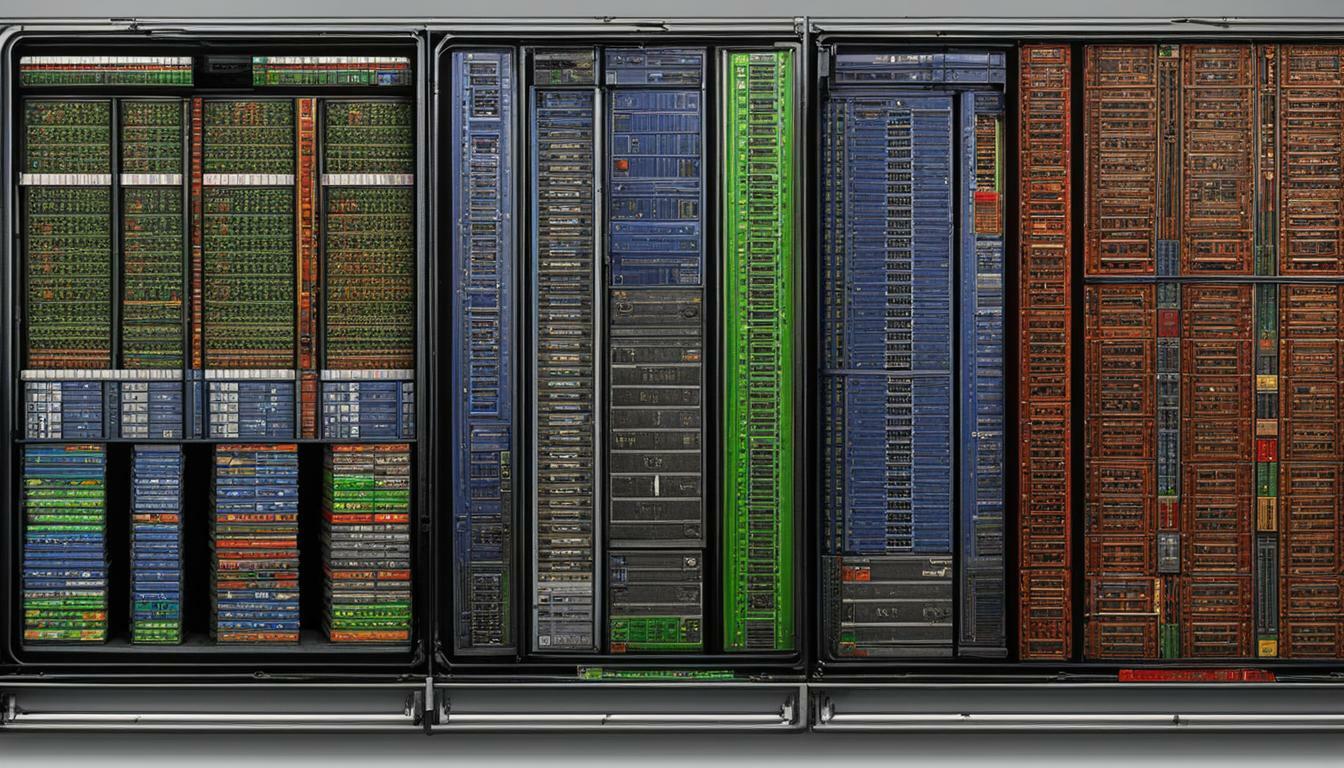Have you ever wondered what makes your computer or mobile device tick? At the core of any electronic device are two types of software: system software and application software. Although both work together to provide a seamless user experience, they fulfill distinct roles and have fundamental differences.
In this section, we will explore the basics of system software and application software, examining their functions and characteristics to gain a better understanding of how they work together to power your electronic devices.
Key Takeaways
- System software and application software are two distinct types of software that work together to power electronic devices.
- System software forms the foundation of your device, managing hardware resources and providing essential services.
- Application software is designed to fulfill specific tasks and meet user requirements, enhancing your overall user experience.
- System software and application software have a unique interdependent relationship that impacts your device’s performance, stability, functionality, and usability.
System Software: The Backbone of Your Device
Have you ever wondered what makes your device tick behind the scenes? The answer lies in system software, the backbone of your device’s operation. System software is responsible for managing and coordinating the various hardware and software components that enable your device to function.
At its core, system software is designed to serve as a platform for application software to run on. It performs a range of essential functions, including managing hardware resources, providing crucial services, and enabling communication between hardware and software components.
One of the primary functions of system software is managing hardware resources. This includes everything from controlling input and output devices to allocating memory and processing power. Without system software, your device would struggle to utilize its hardware resources effectively, leading to slow performance and stability issues.
System software also provides essential services to other software components. For example, it manages tasks like file management, network connectivity, and security features. These services are essential for the proper functioning of your device, as they enable you to access and use applications in a safe and secure environment.
Finally, system software enables communication between hardware and software components. This includes managing device drivers and other software components that are necessary for your device’s hardware to function correctly. Without system software, your device would be unable to run the vast array of applications that make it so useful in your daily life.
Overall, system software plays a crucial role in the proper functioning of your device. Its primary function is to provide a stable and reliable platform for application software to run on, allowing you to take full advantage of the hardware capabilities of your device.
Application Software: Tailored to Meet Your Needs
Application software is designed to meet specific user needs and perform designated tasks. These software programs are user-focused and aim to enhance the user experience. There are numerous categories of application software, each with a unique purpose and set of features. Some of the most popular categories include:
- Productivity applications (e.g. Microsoft Office, Google Docs)
- Entertainment applications (e.g. Netflix, Spotify)
- Communication applications (e.g. Skype, Zoom)
- Education applications (e.g. Duolingo, Kahoot!)
Application software is typically user-friendly and easy to navigate, allowing users to accomplish tasks efficiently and effectively. Additionally, many application software programs can be customized to suit individual user preferences. This level of personalization ensures that users have a positive experience with the software, resulting in increased productivity and satisfaction.
Another defining characteristic of application software is its ability to operate independently of other programs. Unlike system software, which is fundamental to the operation of a device, application software typically does not interact with other software programs. This autonomy allows users to select and run specific applications without interfering with other programs or system processes.
Overall, application software is a critical component of daily tech usage. It allows users to tailor their devices to their specific needs and accomplish tasks efficiently and effectively. By providing user-friendly interfaces and customizable features, application software enhances the overall user experience and increases productivity.
Key Features of System Software
System software is responsible for controlling and managing the hardware resources of a device. It provides essential services, such as security, memory management, and device drivers, that enable communication between hardware and software components. Below are some of the key features of system software:
| Operating System | The operating system is the core component of system software. It manages all the software and hardware resources of the device and provides a platform for other software to run on. It is responsible for managing tasks, memory, and input/output operations. |
|---|---|
| Device Drivers | Device drivers are software components that allow the operating system to communicate with hardware devices, such as printers, scanners, and keyboards. Without device drivers, the operating system would not be able to control and manage hardware devices. |
| Utility Programs | Utility programs are tools that perform specific tasks related to the maintenance and management of the device, such as disk defragmentation, backup, and anti-virus protection. They are designed to optimize the performance and stability of the device. |
The above features are what distinguish system software from application software. While system software is focused on managing and controlling hardware resources, application software is designed to fulfill specific user tasks and requirements. In the next section, we will explore the characteristics of application software.
Characteristics of Application Software
Application software is tailored to meet the needs of users and comes with unique characteristics that set it apart from system software. Here are some of the defining characteristics of application software:
- User-Friendly: Application software is designed to be user-friendly, making it easy for users of all skill levels to navigate and operate.
- Customizable: Unlike system software, application software is highly customizable, allowing users to modify and personalize it to suit their specific needs.
- Specific Task-Oriented: Application software is focused on performing specific tasks, such as creating documents, editing images, or browsing the internet.
- Efficient: Application software is designed to be efficient, enabling users to complete tasks quickly and easily.
- Interactive: Application software is often interactive, providing users with a visually engaging and immersive experience.
Overall, application software is an essential part of your daily tech usage, providing you with the tools and functionality you need to get things done efficiently and effectively.
Interplay Between System Software and Application Software
System software and application software work hand in hand to provide a seamless user experience. System software forms the backbone of your device, managing hardware resources, providing essential services, and enabling communication between hardware and software components; while application software is designed to fulfill specific tasks and meet user requirements.
When you launch an application, it relies on the operating system to provide access to memory, CPU, and other resources. The application uses system software to interact with the hardware and other software components. On the other hand, system software needs application software to make use of the resources it manages and provides. For instance, the operating system creates a bridge between the keyboard and a word processor software to transfer the user’s keystrokes to the program.
In some cases, application software interacts with other application software, which in turn engages system software. For example, when you play music on a media player, the application software sends the audio data to the device driver, which communicates with the sound card in the device to produce the sound. This interaction illustrates the unique interplay between system software and application software.
Each type of software has its unique functions and relies on the other for optimal performance. System software provides the platform for application software to execute, while application software enhances and customizes your device’s overall experience. By understanding the interplay between system software and application software, you can appreciate the critical role each plays in your daily tech usage.
Impact on User Experience
The impact of system software and application software on your overall user experience cannot be overstated.
System software is responsible for the fundamental operations of your device, such as managing hardware resources and providing essential services. Its impact on the user experience lies in its ability to affect device performance and stability. For example, a poorly optimized operating system might result in slow boot times, system crashes, or other performance issues that affect your daily usage of the device.
Application software, on the other hand, directly affects functionality and usability. The impact of application software on the user experience is driven by its ability to provide tailored solutions to specific tasks. For example, a well-designed productivity application might have intuitive features that help you manage your workload more efficiently, while an innovative communication application might transform how you interact with others in social or professional settings.
Ultimately, system software and application software are interdependent and work together to shape your overall user experience. A stable and optimized system software will provide a seamless platform for application software to run on, while well-designed application software will enhance the usability and functionality of the device.
Conclusion
After exploring the fundamental differences between system software and application software, it is clear that each plays an essential role in shaping our daily tech usage.
System software serves as the backbone of devices, managing hardware resources, providing essential services, and enabling communication between hardware and software components.
Application software, on the other hand, is tailored to meet specific user requirements, with various categories such as productivity, entertainment, and communication applications designed to enhance overall user experience.
It is important to recognize the key features of system software, including operating systems, device drivers, and utility programs that distinguish it from application software. Similarly, understanding the unique characteristics of application software, such as user-friendliness, customizability, and task focus, is vital in appreciating its role in our daily lives.
The interplay between system software and application software highlights their interdependent relationship, where system software supports the execution of application software and application software relies on system software for resources and functionality.
Both system software and application software have a significant impact on our overall user experience. System software influences device performance and stability, while application software directly affects functionality and usability.
In conclusion, the differences between system software and application software are significant, and recognizing their individual significance is crucial in appreciating their roles in shaping our daily tech usage.
FAQ
Q: What is the difference between system software and application software?
A: System software forms the foundation of a device’s operation, managing hardware resources, providing essential services, and enabling communication between hardware and software components. On the other hand, application software is designed to fulfill specific tasks and meet user requirements, such as productivity, entertainment, and communication applications.
Q: What are the key features of system software?
A: System software includes operating systems, device drivers, and utility programs. These features work together to provide a seamless platform for application software to run on.
Q: What are the characteristics of application software?
A: Application software is designed to be user-friendly, customizable, and focused on specific tasks. It enhances the overall user experience by providing tailored functionalities.
Q: How do system software and application software interact?
A: System software supports the execution of application software by providing necessary resources and functionality. Application software, in turn, relies on system software to function properly.
Q: What impact do system software and application software have on the user experience?
A: System software influences device performance and stability, while application software directly affects functionality and usability. Both types of software play a significant role in shaping the overall user experience.
 Skip to main content
Skip to main content
